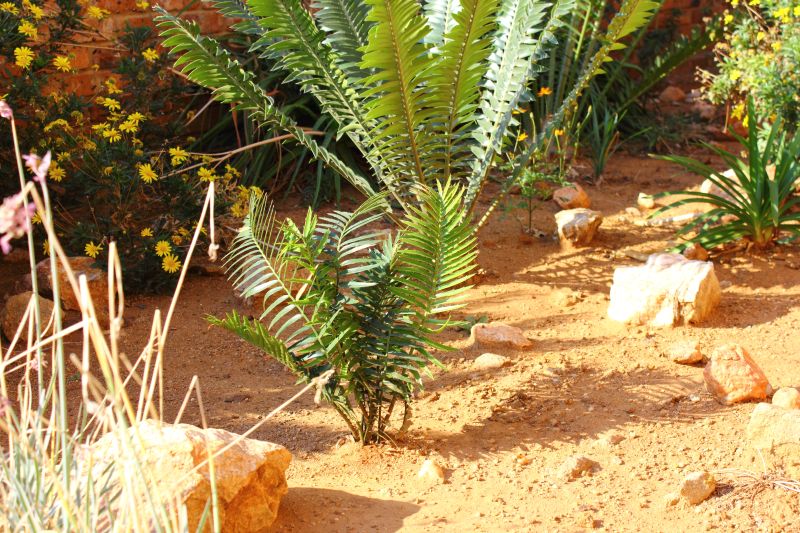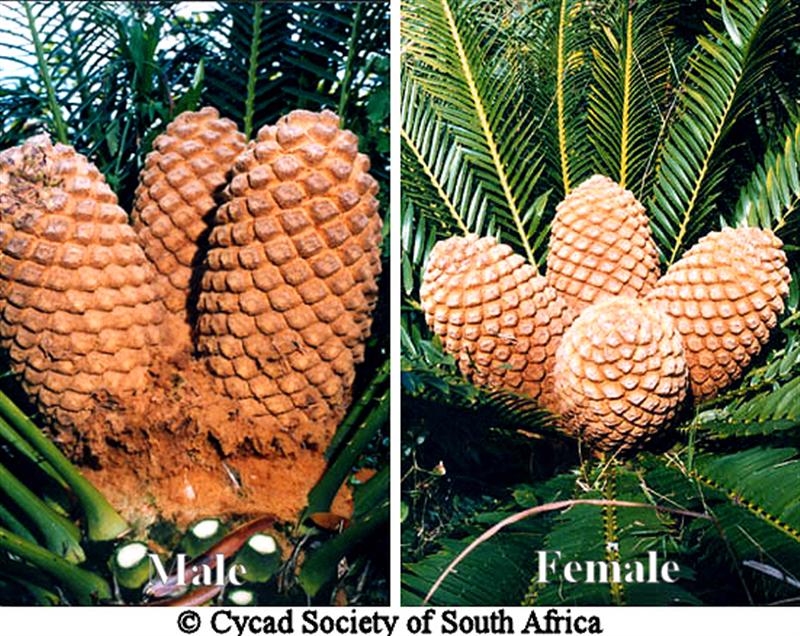Cycads of South Africa
Moderator: Klipspringer
- nan
- Posts: 26480
- Joined: Thu May 31, 2012 9:41 pm
- Country: Switzerland
- Location: Central Europe
- Contact:
Re: Cycads of South Africa
I don't have the permission........ 



Kgalagadi lover… for ever
https://safrounet.piwigo.com/
https://safrounet.piwigo.com/
-
Sharifa
Re: Cycads of South Africa
I don't have permission either 
I will be posting photos and information of most of them
I will be posting photos and information of most of them
- Lisbeth
- Site Admin
- Posts: 65896
- Joined: Sat May 19, 2012 12:31 pm
- Country: Switzerland
- Location: Lugano
- Contact:
Re: Cycads of South Africa
I hope that you can soon open a cycad nursery 

"Education is the most powerful weapon which you can use to change the world." Nelson Mandela
The desire for equality must never exceed the demands of knowledge
The desire for equality must never exceed the demands of knowledge
-
Sharifa
Re: Cycads of South Africa
or start baking cycad breadLisbeth wrote:I hope that you can soon open a cycad nursery
Some of the ways cycads were used in days gone by.
“The starch obtained from the stems of certain species is still used as food by some indigenous tribes. Tribal people also grind and soak the seeds to remove the nerve toxins that may be present, making the food source generally safe to eat, although often not all the toxin is removed. In addition, consumers of bush meat may face a health threat as the meat comes from game which may have eaten cycad seeds and carry traces of the toxin in body fat.
Cycad, known as sotetsu in Japanese, was traditionally a famine food in Okinawa - a last resort to turn to for sustenance during particularly difficult times. A period of particularly devastating poverty and famine in the 1920s, caused in large part by Japanese economic policies in the island prefecture, is known as "cycad hell" or sotetsu
Cycad meal known as Eenthu in Malayalam is a common food in Kerala. Traditionally, the seeds were sliced and kept in direct sunlight or near the hearth during rainy season to promote drying. The drying process is carried out to reduce the toxin levels and as a means of preservation. The outer shell is subsequently removed and inner portion is ground into a flour. Properly dried cycad seed flour may be stored for several years without deterioration.
Food items like Puttu, Eenthu kanji, Eenthu payasam etc. are made out of cycad seed power.These food items are particularly prepared in heavy rainy seasons in Kerala.”
Cycad leaves are used to decorate venues during festivals, marriages and other community celebrations.
In Vanuatu, where the cycad is known by the Bislama name namele, the tree has deep customary and spiritual significance. A single cycad leaf may be used as a taboo sign, while a pair of crossed cycad leaves is a peace sign and appears on the Vanuatu flag. The breaking off of fronds from a cycad leaf is used in traditional contexts as an aid to counting.
-
Sharifa
Re: Cycads of South Africa
E. aemulans.
Description.
The stem of Encephalartos aemulans is well developed, erect and unbranched. It can be up to 1.5 meters tall and rarely up to 3 meters and suckers from the base. Stems are up to 350mm in diameter and have a densely woolly crown.
Leaves are dark glossy green and straight. The rigid leaves are from 1.2 meters to 1.5 meters long and rarely 2 meters long.
This is a little one in our garden. It will take years to reach 1.5 metres
The one in front is the aemulans.

These pictures with cones are courtesy of Cycad Society of SA

Habitat.
The species is endemic to South Africa and occurs in the KwaZulu Natal province. It is known from one population in the Vryheid district. Two old male plants were located 10km away but no further populations were found. The plants grow on a hill at an altitude of 1000 to 1100m and prefer south facing sandstone cliffs in short grassland. Plants also occur below the cliffs in humus-rich screed where especially small plants were found in more shady conditions. Mature coning plants are fully exposed. The north and north-east slopes only had a few very old plants and conditions do not seem to favour seedling regeneration. The climate is hot in summer and cold in winter with possible light frost. Rainfall is 600-800mm per annum with a summer maximum.
This species has long been collected before being described and can be found in private collections. Plants have even been collected from the type locality after description and for that reason information about locality is kept secret to protect the plants.
Description.
The stem of Encephalartos aemulans is well developed, erect and unbranched. It can be up to 1.5 meters tall and rarely up to 3 meters and suckers from the base. Stems are up to 350mm in diameter and have a densely woolly crown.
Leaves are dark glossy green and straight. The rigid leaves are from 1.2 meters to 1.5 meters long and rarely 2 meters long.
This is a little one in our garden. It will take years to reach 1.5 metres
The one in front is the aemulans.

These pictures with cones are courtesy of Cycad Society of SA

Habitat.
The species is endemic to South Africa and occurs in the KwaZulu Natal province. It is known from one population in the Vryheid district. Two old male plants were located 10km away but no further populations were found. The plants grow on a hill at an altitude of 1000 to 1100m and prefer south facing sandstone cliffs in short grassland. Plants also occur below the cliffs in humus-rich screed where especially small plants were found in more shady conditions. Mature coning plants are fully exposed. The north and north-east slopes only had a few very old plants and conditions do not seem to favour seedling regeneration. The climate is hot in summer and cold in winter with possible light frost. Rainfall is 600-800mm per annum with a summer maximum.
This species has long been collected before being described and can be found in private collections. Plants have even been collected from the type locality after description and for that reason information about locality is kept secret to protect the plants.
- nan
- Posts: 26480
- Joined: Thu May 31, 2012 9:41 pm
- Country: Switzerland
- Location: Central Europe
- Contact:
Re: Cycads of South Africa
I love these trees 

we can find some in the South of France
and maybe Liz could have some in Ticino
we can find some in the South of France
and maybe Liz could have some in Ticino
Kgalagadi lover… for ever
https://safrounet.piwigo.com/
https://safrounet.piwigo.com/
- Lisbeth
- Site Admin
- Posts: 65896
- Joined: Sat May 19, 2012 12:31 pm
- Country: Switzerland
- Location: Lugano
- Contact:
Re: Cycads of South Africa
Maybe, Nan, but I doubt it. Last winter we arrived at -10° during certain nights 
"Education is the most powerful weapon which you can use to change the world." Nelson Mandela
The desire for equality must never exceed the demands of knowledge
The desire for equality must never exceed the demands of knowledge


